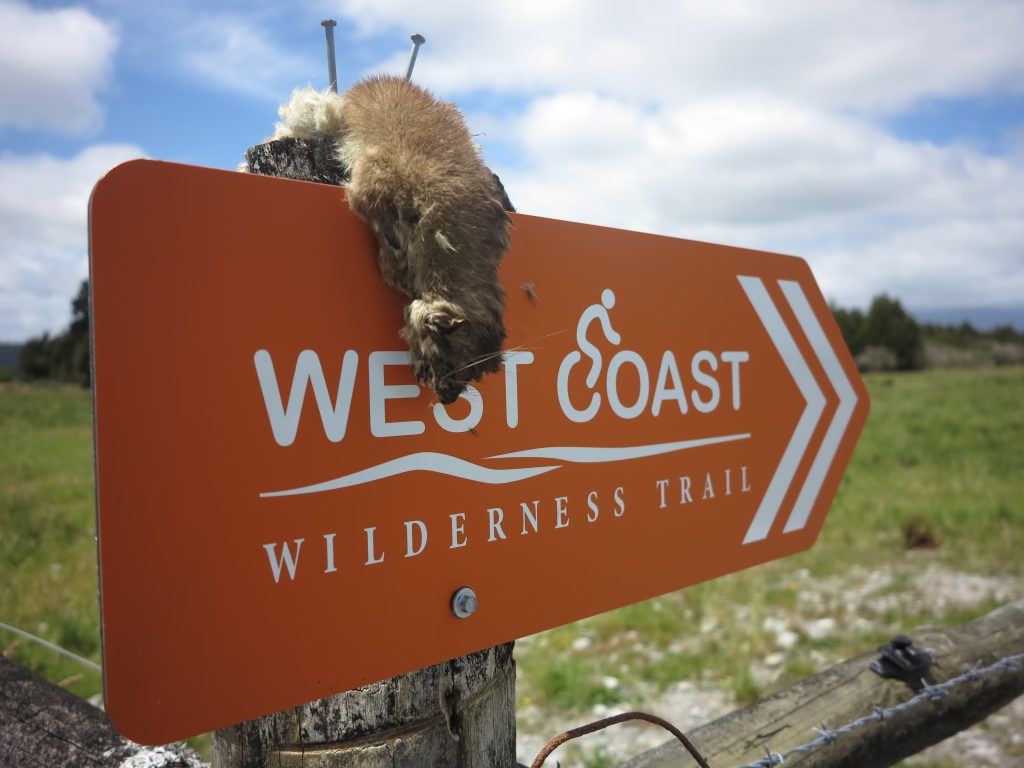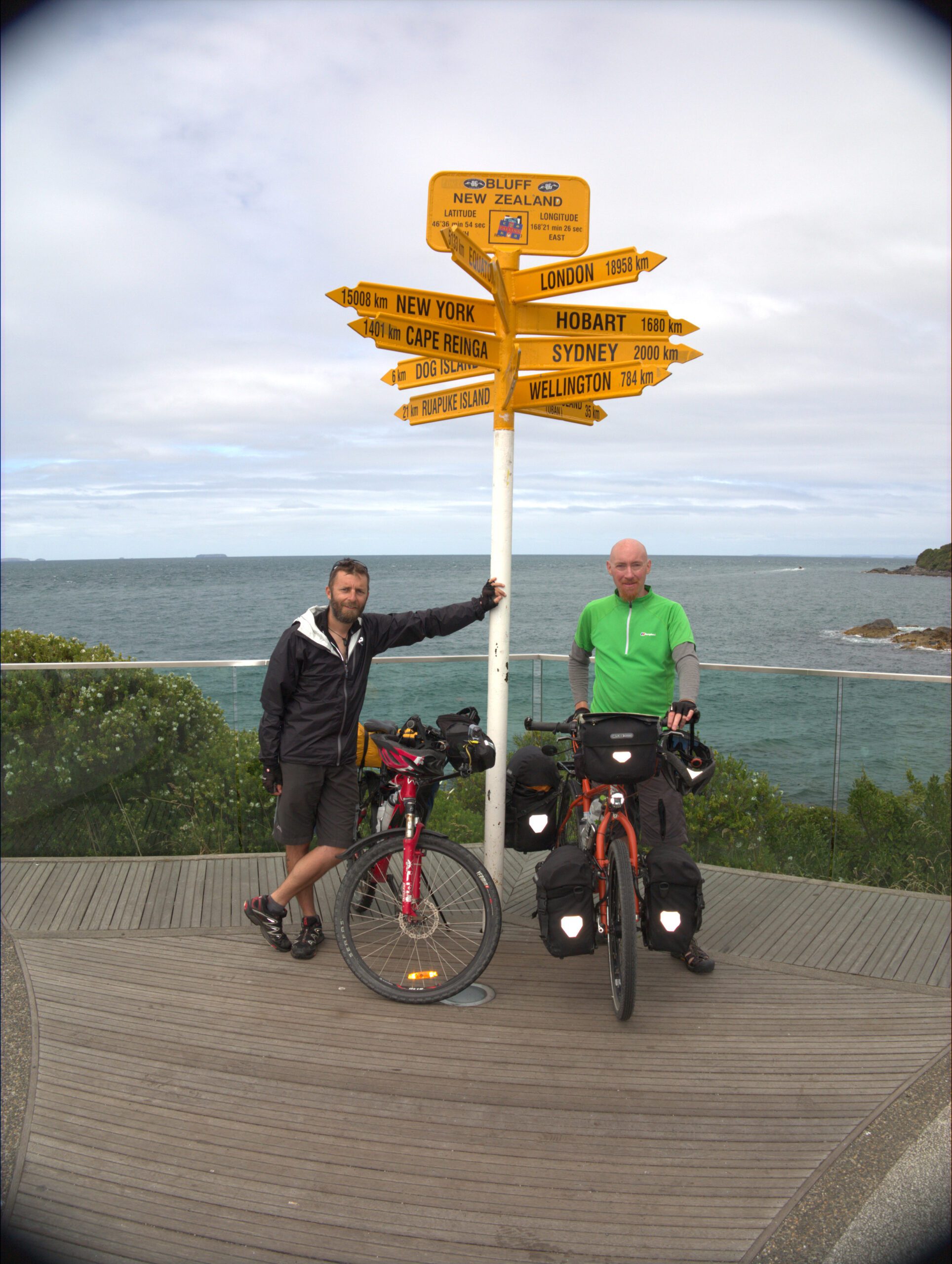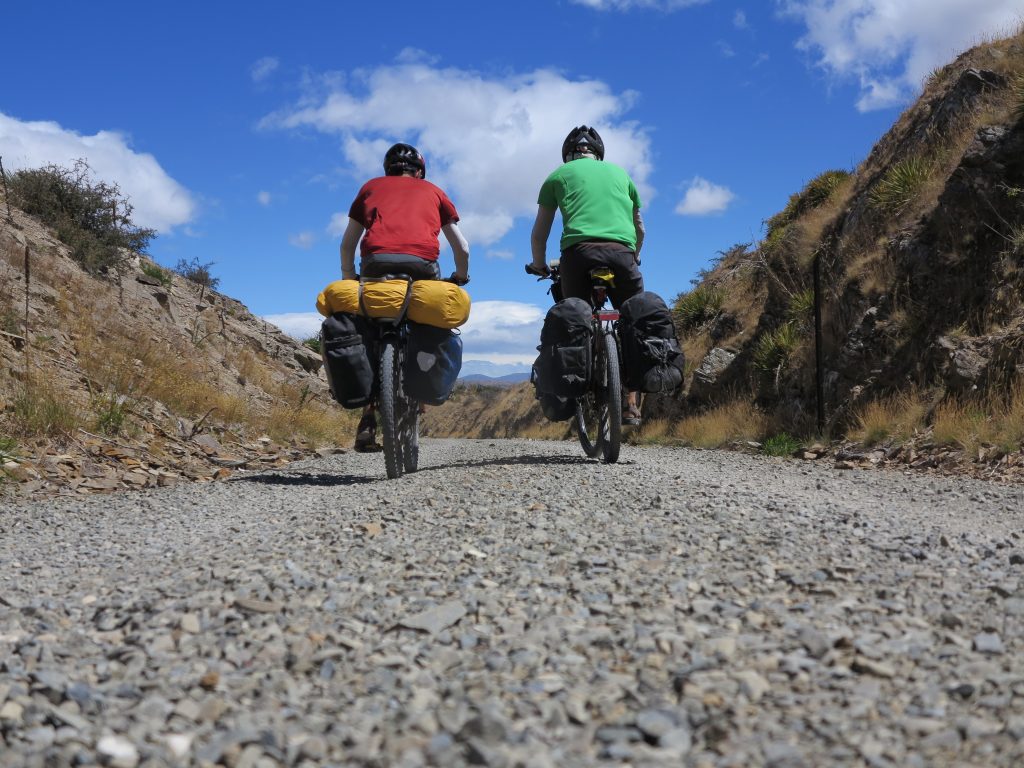Dan Slater spent a month circumnavigating Te Waipounamu by bicycle so you don’t have to. Actually, you should, because it’s a good time. But there are a few things you really need to know first.
AH, CYCLE TOURING IN AOTEAROA – LIVING THE DREAM! DAY AFTER DAY OF GENTLE PEDALLING ALONG COUNTRY LANES, WHISTLING JAUNTY TUNES AND WAVING AT LIVESTOCK, RESTING UP IN A SNUG HOSTELRY EACH EVENING, SUPPING ON CRAFT BEER AND LAUGHING WITH THE LOCALS. RIGHT?

This is what I pictured when I set out with my friend Paul to ride more than 2200 kilometres around the South Island of Aotearoa New Zealand. The plan was to leave from Picton, head down the West Coast and south to Bluff, then ride back up the East Coast to finish where we started. This might be what you’re picturing too, imagining the journey. Allow me to set you straight: there are things I learned the hard way. You won’t be able to avoid them, but at least if I tell you about them, you’ll be forewarned. And there are plenty of pros to counterbalance the cons. Really.
THE WIND
Let’s get this one out of the way first. Until you’ve used human power to propel a vehicle against a strong Nor’wester, you cannot appreciate how angry it is possible to become at what is essentially a piece of air. I screamed, raved, swore and waved my arms about wildly to slap it away, but it just kept on laughing while it broke my soul. The moment that frustrated me beyond reconciliation arrived when I’d spent half an hour puffing up to the crest of a hill anticipating a glorious coast down the other side, only to have my hard-earned momentum stolen, yes, STOLEN, by a lurking headwind. Having to pedal downhill is enough to make you weep, believe me. Those little arrows on weather maps, to which I’d never paid attention? Now they give me nightmares.
Fighting this invisible foe even inspired me to write a poem. It includes the lines: “It is not, you might think, just a bit of a breeze / Or a freshness to blow our hair back / I mean massive great gusts that bring sheep to their knees / And buffet us right off the track.”

THE SANDFLIES
You may have heard of these little buggers. You may even have experienced them on a visit to Milford Sound. But nothing prepares you for the seething animosity with which they target you on a bicycle. Thankfully confined primarily to the West Coast, and thus only about a quarter of our total kilometres, they were a rude shock come the evening of the third day. They didn’t bother us while we were in motion, but as soon as we slowed to look for a campsite, they’d co-ordinate their attack. We got skilled at picking a site on the move, stopping and dismounting in one swift manoeuvre, and throwing up our tents in seconds, all while slapping the bastards away. Once inside our silnylon fortresses, having slain any invaders trapped inside, we’d stay there until briefly exiting for dinner. We got our cooking, eating, and washing up routine down to something like twenty minutes to minimise exposure to the country’s most lethal wildlife. We never thought we’d be so pleased to see the Haast Pass.
THE HAAST PASS
I mean, sure, we expected hills. Of course we did. The whole South Island is basically a support system for Kā Tiritiri o te Moana / the Southern Alps. When the road went up, we went up; when it went down, so did we. I’m not complaining (although I may have done at the time), but the Haast Pass was the single steepest gradient climb of the entire trip.
After sleeping in the town of Haast (22 metres above sea level), the entire following day was devoted to ascending 540 metres up a two-lane road to the top, accompanied by a constant stream of tourist traffic. It wasn’t long before I’d exhausted my steed’s repertoire of gears completely. I resorted to dismounting and pushing the final furlong, one of only two times in the whole 2270-kilometre journey that was necessary. At least we were away from the damn sandflies.

THE TRUCKS
Plenty of lovely motorists tooted encouragement as we toiled, but New Zealand roads in summer are frightening. For one, there’s the camper vans. Indeed, criticising international tourists behind the wheels of Wicked/Jucy/Britz campers for driving too fast, or too slow, or too foreign, is a national sport. I daresay they have a point, but for me, the scourge of the highway network is the trucks. Specifically, the logging trucks and milk trucks, which would blow past us with terrifying force (= mass x acceleration) at regular intervals.
I’d grip the handlebars extra tight when I heard one coming, knowing the backdraught would blow me sideways. In heavy traffic or loud rain, we’d have no warning, and eighty tons of metal, wood and dairy products thundering by at 100kph is not something you want to happenby surprise. Usually, a little wobble was the only result, but Paul was once tossed clean into the barrier, which knocked him back into the road and off his bike. Thank goodness there was no-one behind him.
THE ROADKILL
The volume and variety of roadkill throughout the South Island was an endless source of fascination, sadness, amusement, horror and odour. It seems evolution has stalled in the last hundred years, or the world’s wildlife would surely by now be born with an innate distrust of wide swathes of hard, black ground. I was initially just appalled by the corpses littering our path, but after days of intestinal exposure I began to wonder which species was contributing most to the redecoration of the hard shoulder. A statistics project was born. I kept a running tally in my head and scribbled down the figures at every opportunity. In time, I built up a gruesome picture – at least until Queenstown, at which point I could take no more. Hedgehogs took an early lead. Stoats also started strong, but faded away on the West Coast, where the possum population exploded (literally). There was just one grouse, and mice were not only poorly represented, they were surprisingly outnumbered by bumble bees (though these may have been dying of natural causes). The clear joint winners were the leporids, namely rabbits and hares, which I gave up counting when the figure neared infinity.
FELLOW CYCLISTS
Long-distance cycling is essentially a solo occupation. As the chat between the two of us lessened and we relaxed into companionable silence, much of each day was spent in thought (or composing poems and tallying roadkill). There were financial transactions, of course, and the occasional interesting conversation with a local, oh, and the long-distance hikers, a Nordic blader and Katzhiko Takashige, a 54-year- old Japanese man running the entire globe for world peace. But the main sources of outside stimulation were the fellow cyclists.
These encounters were mostly a friendly wave of solidarity. On the occasions we met at campsites, however, talk inevitably turned to bikes and specifically bike setup, which says a lot about a person in some circles.
My mount was the same bicycle I’d had for years. I’d used it for both riding to work and periodic thrashing on mountain bike trails. It was cheap and sturdy and uninteresting. But Paul’s steed, a Surly Troll with a Brooks leather saddle and a Rohloff Speedhub, was a topic of instant conversation. He’d had it built specifically to ride from Sydney to Perth a couple of years previous. Our new friends would nod sagely in the direction of his Surly and ask penetrating questions which he’d answer comprehensively while I loitered at the side like a lemon.
CAPE FOULWIND
My biggest fear before we left was that we’d be battered every day by head-stinging rain, never dry out, end up sodden, miserable lumps, legs pumping mechanically as we wished we’d never left home. Thankfully, the New Zealand summer was kind to us. Except, that is, in the most appropriately- named promontory in the country, if not the world: Cape Foulwind, so-anointed by Captain James Cook after his ship was subject to a severe buffeting thereabouts.
It was New Year’s Eve, and we’d just crossed the lowest part of the northern Southern Alps at Murchison. We were following the Buller River to the West Coast though the spectacular Upper and Lower Buller Gorge. At least they were supposed to be spectacular; they were invisible behind a sheet of driving rain, which had started at breakfast and got steadily worse. Sodden, miserable lumps indeed. We cut the day short at Westport, a large town situated right next to, you guessed it, Cape Foulwind. On arrival, we wrung each other out and treated ourselves to a bed in a backpackers, a steak dinner and a night out to ring in a new year haunted by a newfound understanding of what the weather can do to a person.
THE PAIN
Cycle touring hurts. Well, it hurt me anyway. The first thing to go was one of my knees. The longest I’d ever ridden a bike before was three days along the Loire Valley in France, which is notable for its lack of hills. That’d been fine and dandy, but by day three of New Zealand a demon seemed to be trying to prise my patella off with a butterknife. I questioned whether I would survive another four weeks, but perseverance and painkillers eventually dulled it to a constant twinge. By then, though, my arse had taken over as my body’s chief complainant. Riding for 29 days equates to a lot of hours sitting down, and without a fancy Brooks saddle, lunchtimes had me dreading the afternoons. I’d stand up on the pedals whenever I could to give my sit bones a rest, but by the time we got back to Picton I had tender ridges of calloused skin running diagonally back from my perineum. They stayed, like scar tissue, for years.

To experience Dan and Paul’s ride through the medium of film, check out ‘Tyres, Trucks & Tarmac: Cycling the South Island’, a six-minute movie about the trip at thisisnotaholiday.com.
WORDS AND IMAGES: DAN SLATER

